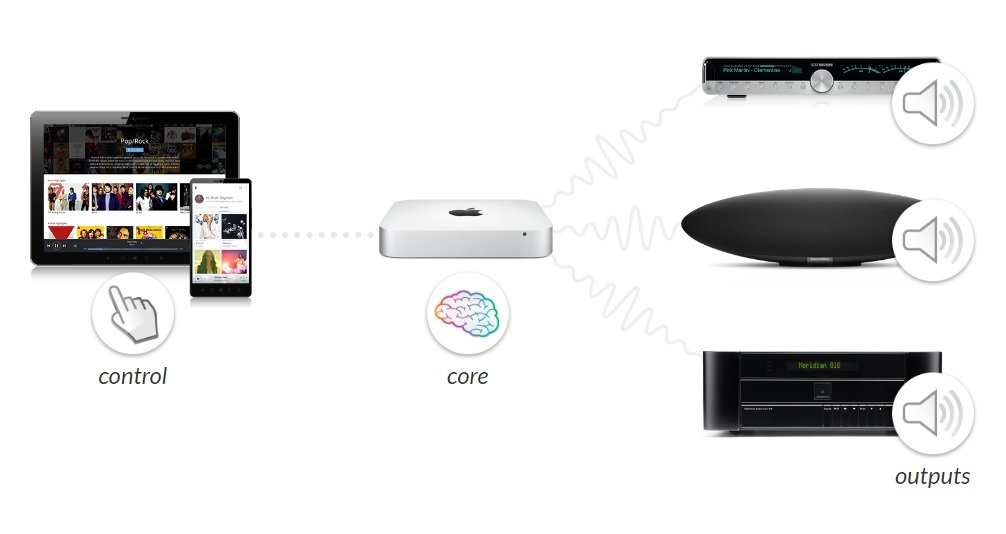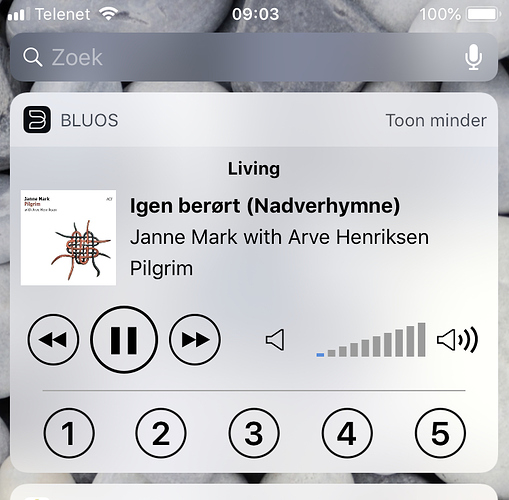BluOS is a software and hardware system that resides on an expansion card inside your Nad M10.
On its own, BluOS can ‘fetch’ audio data from your local storage, or from the internet from accounts you may have with, say, Tidal, Spotify etc.
Once this data is received, it is buffered and then sent on to the D-A in the Nad M10.
The BluOS also passes information about the song being played and allows an off-board Control app to interact with the playback (pause, rewind, fast-forward, skip etc.). It also passes meta-data to the Control app (artwork etc).
BluOS can also sit there doing very little. It can be ‘pushed’ audio data from a different, external audio control system. When this happens, all BluOS has to do is receive that audio data and report back that it’s buffers are filling up nicely, or if they are emptying it can report back and the external audio system will provide it with more audio data.
The external audio data delivery system in this case I am talking about is Roon. Roon is a software and hardware system that resides outside your Nad on a computer on the same network.
If you use Roon with BluOS, Roon does all the fetching of audio, the collating of metadata, the handling of Tidal or Quobuz accounts, internet radio etc. then passes raw audio data (PCM) onto BluOS which just buffers it and passes it onto its output and onto, in your case the D-A in the Nad.
Roon has it’s own control interface (iOS or Android or another PC on the same network), to which it passes metadata information and data such as song position, which it gets from knowing how much sound data it’s shovelled across to BluOS.
It also receives control information from whatever Roon app is controlling it.
When using Roon with BluOS, the control side of BluOS is not used, the BluOS control app is not used, BluOS does not ‘talk’ to Tidal or an internet radio provider, it does not request anything from your network. Roon does all this instead.
Hope that makes sense. 



